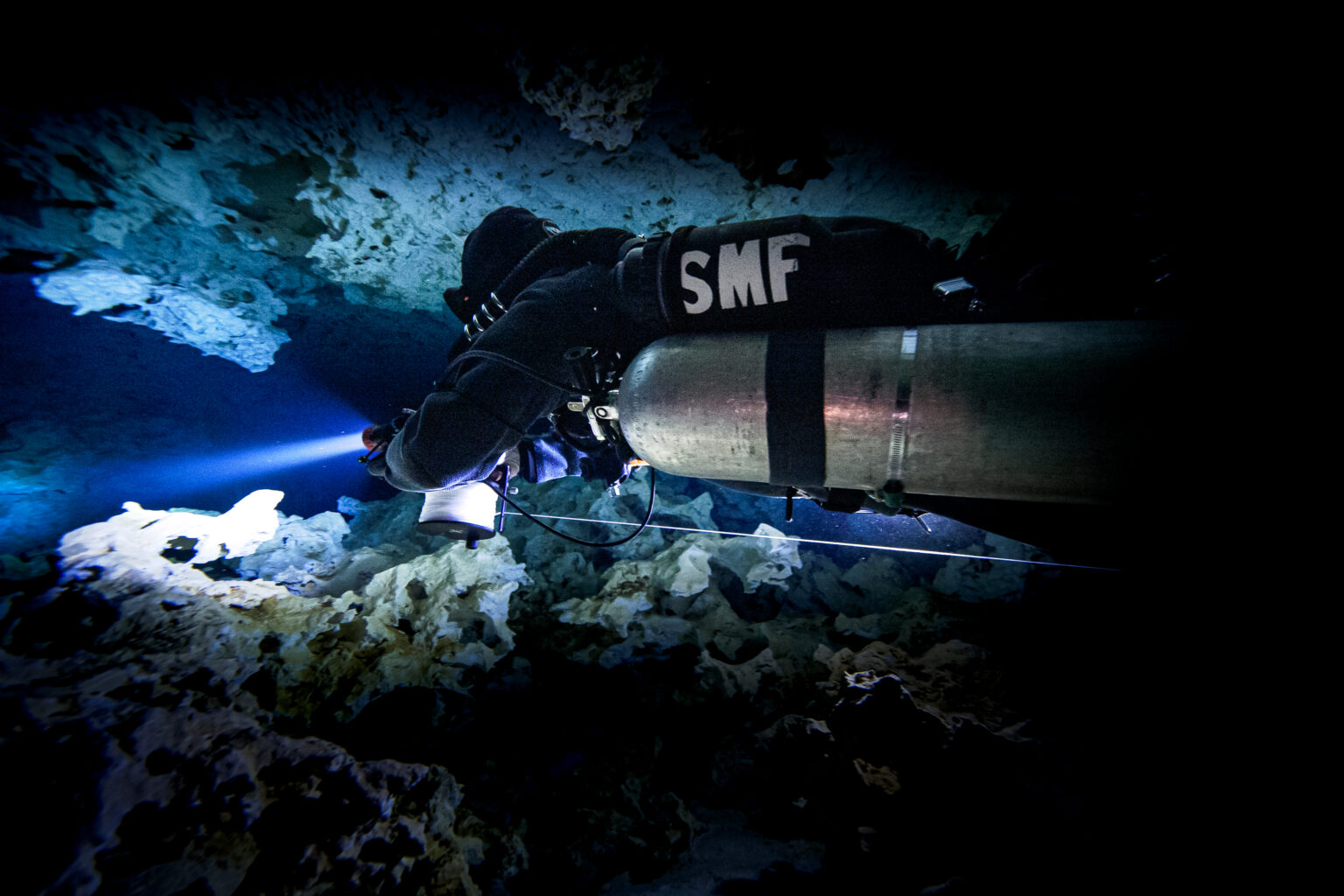
Discovery, exploration and connection
In early 2022, a new cenote was scouted by Tristan Ternat. The cenote’s water was in a dry cave, entered by squeezing through a low entrance – about a meter of clearance, and then the cave opened up into a large dry gallery. This first gallery became our dressing room and gearing-up space for our dives. Carefully walking down a rocky slope and to the left (as you look into the dry cave), you reach the surface pool, and on the far side of a dune of calcite rafting, the underwater cave passage opens up. On the other side, to the right of our dressing room, the dry cave continues quite a bit further, maybe 100 meters before ending in a collapse. On this side, there is a second underwater cave entrance too, with the cave extending north underwater.
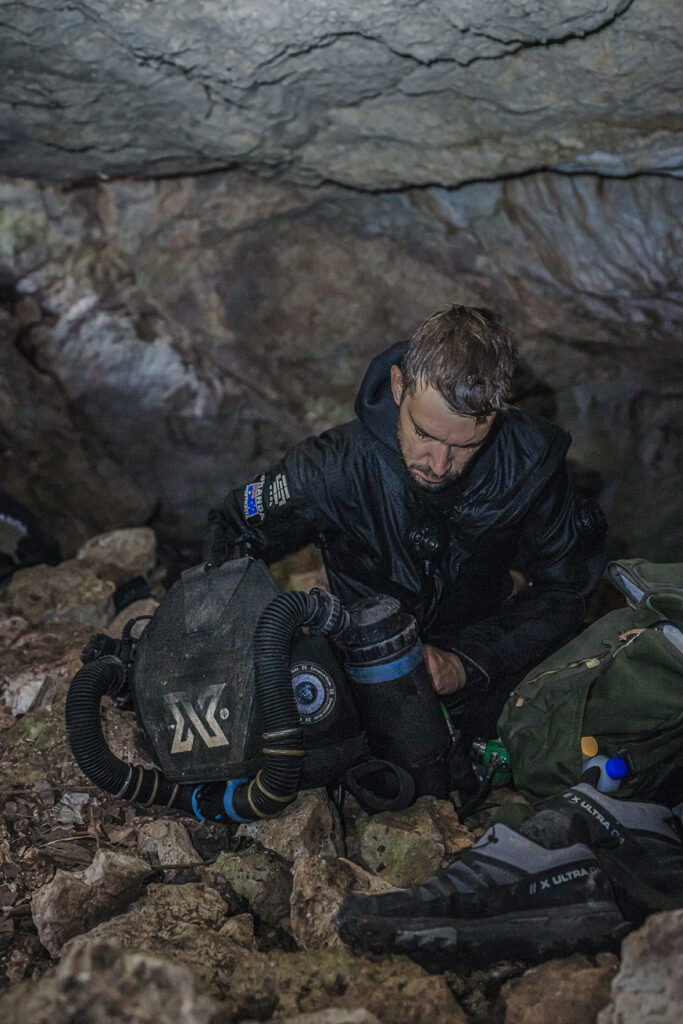
In May 2022, the exploration season, Phillip Lehman, and I returned and continued to explore the cave. Initially, Tristan had laid a line in each of the water-filled sections from the dry cave. We dove the closer, easier access pool first on the south side. Tristan’s line went pretty directly south, through a shallow, decorated, white cave, for 300 feet (100 meters) before ending, with the cave tunnel continuing. We tied our reel into the end of Tristan’s line and continued southward until the cave got smaller and seemed to wall out. Being on CCRs meant that we could backtrack along the line and try some of the leads, tunnels with exploration potential, that we had marked on the way in. Which is exactly what we did, pushing a lead west before trying to turn back and head to the south. Each time we tried to go south, the cave soon shut down, tunnels ending, or were becoming too small because they were filled up with sediment, or we found the way blocked by stalagmites and stalactites. We were forced to back track and go west again.
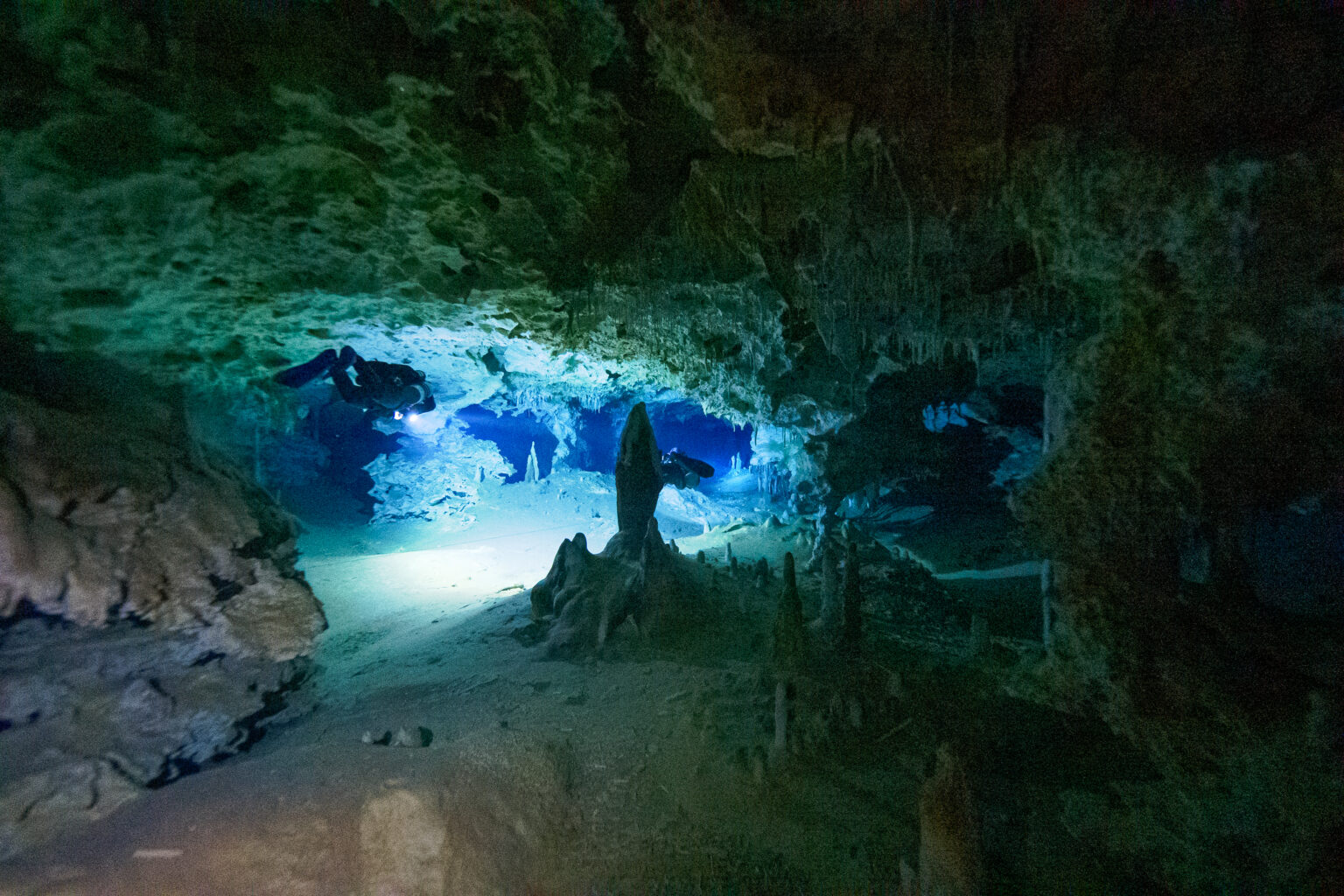
This was how the exploration seemed to go on those first dives. We continued to follow the trend of the cave, with tunnels extending south only to choke up with calcite rafting or wall out. Western tunnels ran for some distance before ending, and then we would continue to try going south.
One day we took a break from the southern section to check the northern side. Diving the northern section, the cave was just as shallow and if anything more choked up with calcite rafting and sediments. This made it hard to find a way on, and some line was laid before finding a going passage. The passage continued for a ways through low, calcite-filled tunnels before we found another line. Swimming down it, we came to one of our exploration arrows. We had connected the northern section with the southern!
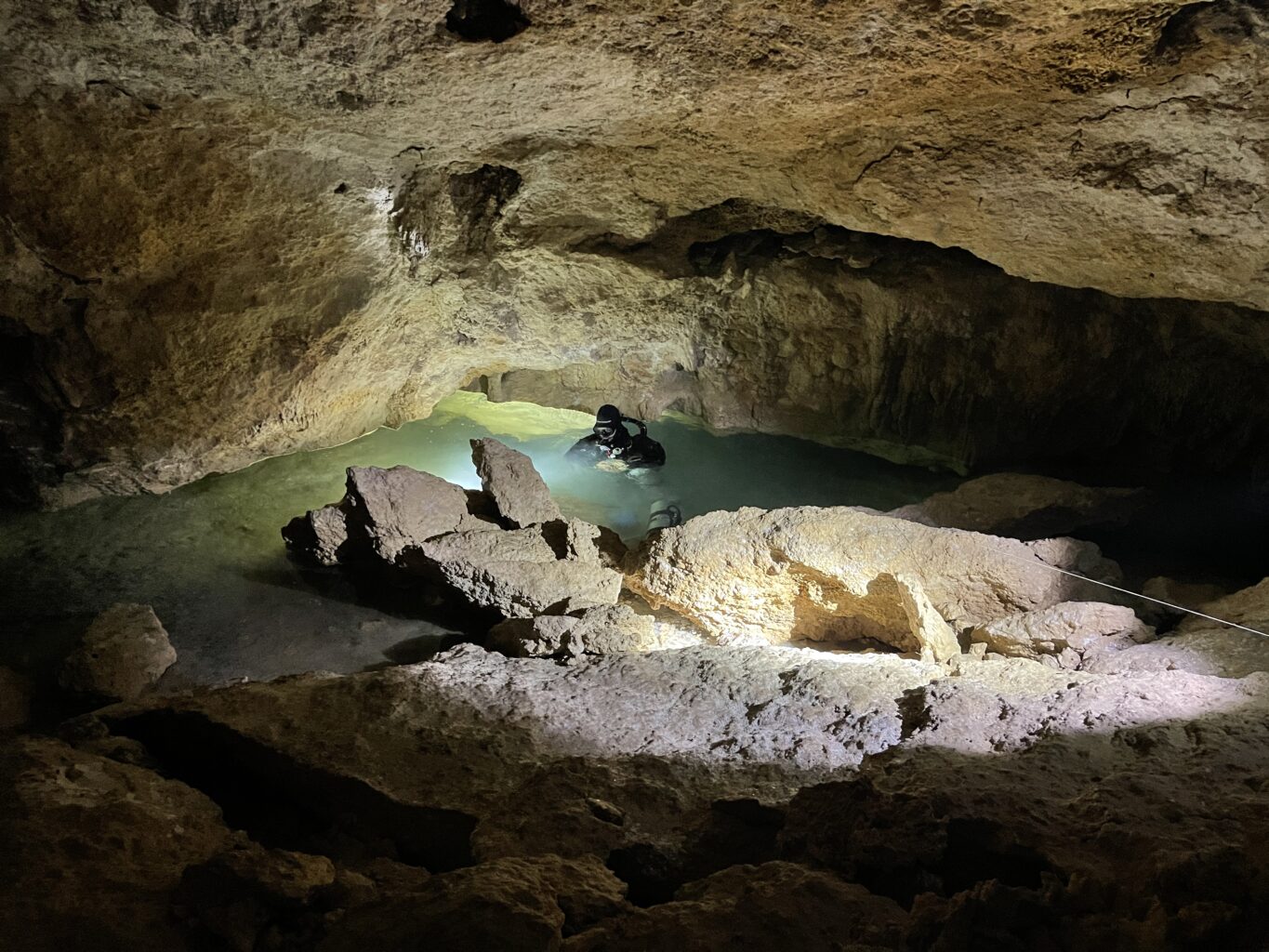
Over five days of diving, we extended the cave to 11,300 feet (3,400 meters). Much of this was made possible by us diving rebreathers and the advantages they gave us. With CCRs, we were able to stay in the cave for many hours at a time. Less percolation also meant that we had good visibility for all of the dive and could check leads we had marked close to the entrance with still decent visibility by the end of the dive. We would not have had this on open circuit systems.
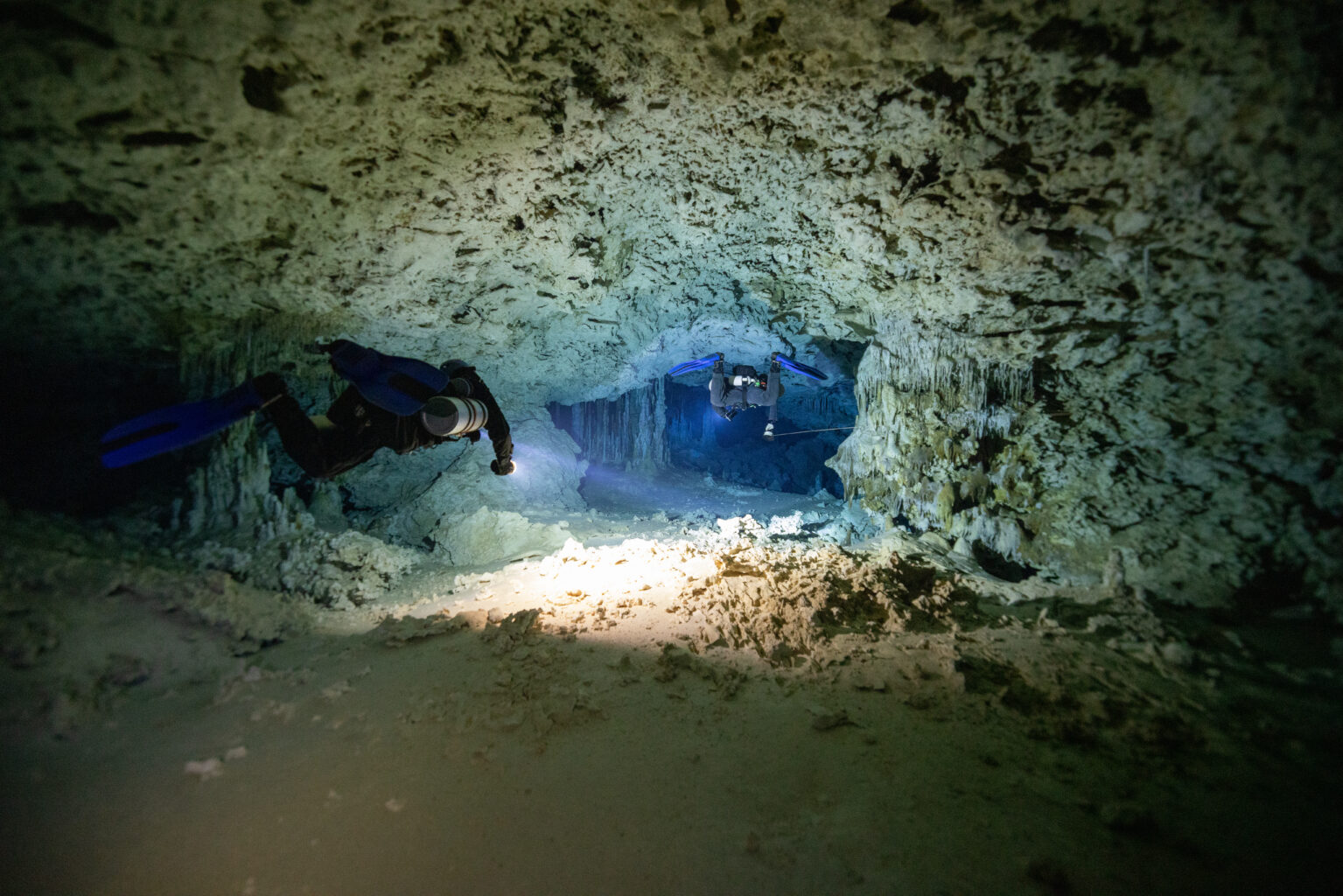
Kim Davidsson joined for two days of exploration. A few years ago, Kim, Phillip, and I had filmed an episode for “Somos Los Cenotes” during an exploration dive. This is always a bit risky. What if we don’t find any cave, silt it out, or it’s small and doesn’t make for good film? Luckily, on that dive, we did find some amazing cave, and each emptied a reel! So our hope was that we could repeat this again in Plasma Torus. And the cave cooperated with us! We made our way to the end of the line and took off, first me laying the line with Kim lighting up the cave and Phillip filming, then when I finished my reel, Kim and I swapped roles. What a fantastic day that was!
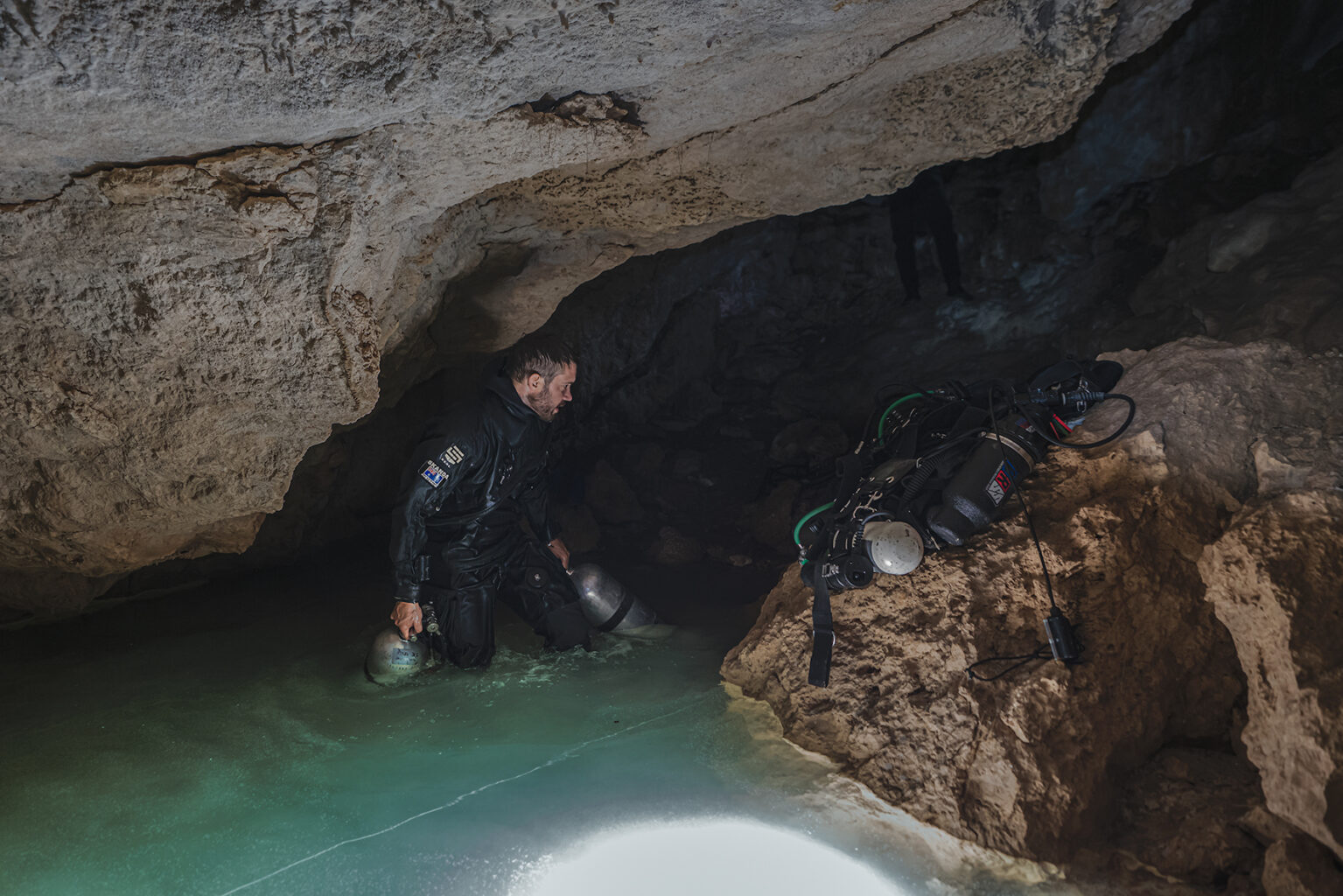
Plasma Torus had grown to 16,000 feet (4,870 meters) when we connected it to a neighboring cave system. As seems typical for the area, the connection was made through an insignificant-looking restriction. We had been pushing a line to the northwest, and where we had ended it really seemed to shut down. The tunnels ended, there was no way to work around the end of the cave. Working our way back along the line we had laid, we tried every side tunnel to see if there was any way to continue. We had done just that and ended our line when the tunnel seemed to end in a collapse when I saw a low, unpromising lead on our left as we swam out. I gave Phillip the ‘hold’ signal, tied in my reel, and squeezed along, laying a line. I had to push up through a low breakdown where the roof had collapsed down, and then again on the other side. Once on the other side, I looked ahead, and there was an end of the line in front of me! I connected the reel, then swam back to call Phillip to come see what was there. We continued along this mystery line, wondering where it had come from and who had placed it in such a remote section of the cave, and reached the end. At the end of the line was a tie-off with an arrow with our names on it, the previous year’s date, and the name ‘wolf’. We could recognize where we were with that information! The line was the ‘wolf’ line, one we had cut back from the mainline, creating a jump, as we thought it ended!
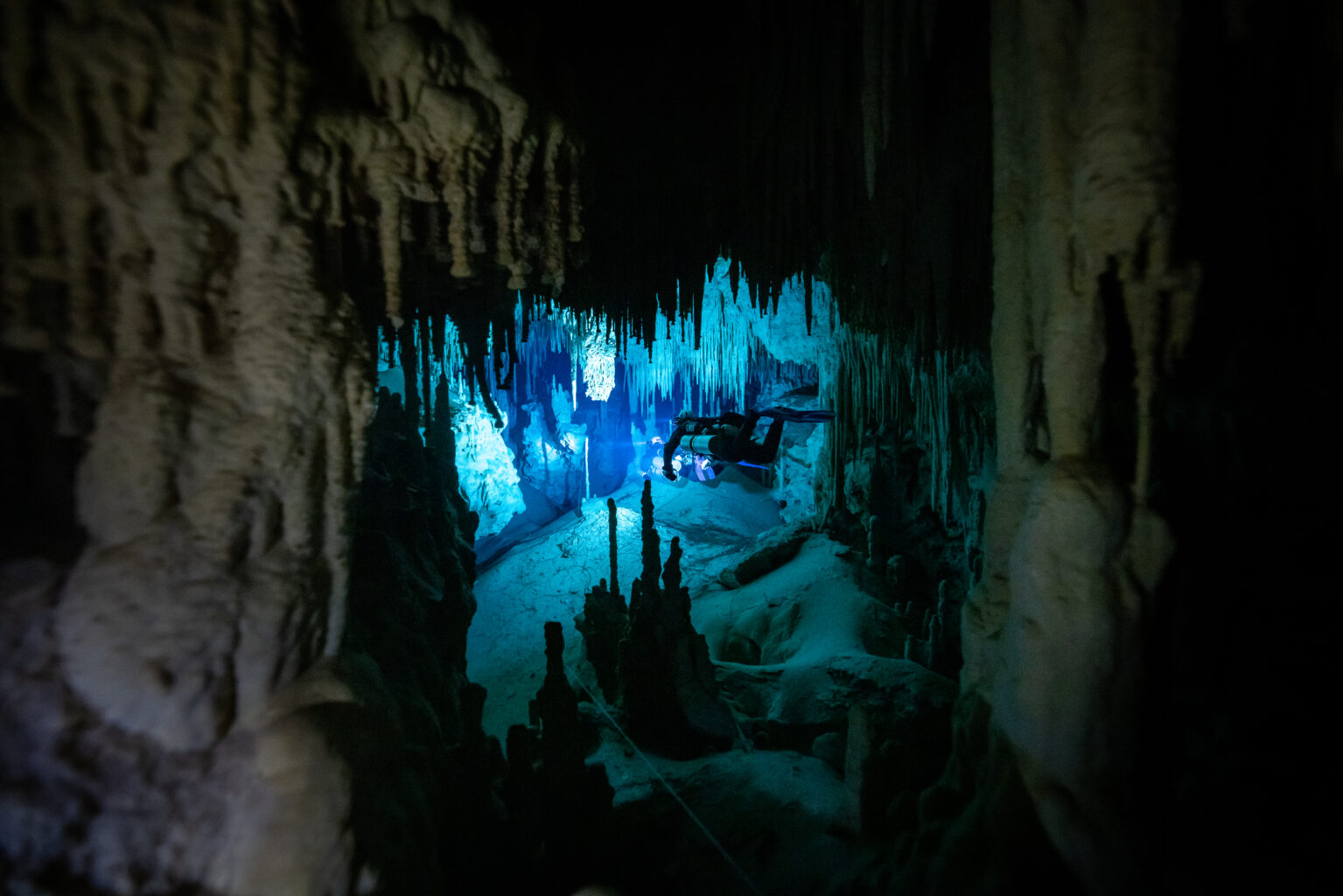
Connecting to the neighboring system meant that Plasma Torus became part of the bigger system. This is a convention when two caves are connected; the smaller cave is incorporated into the size of the longer cave. With the addition of the explored and surveyed passage, the whole system is now approaching 96,000 feet (29,600 meters)! The connection also opened up slightly easier access to the far reaches of the system as we connected, being a decent two-thirds less of the distance than from the original cave entrance.
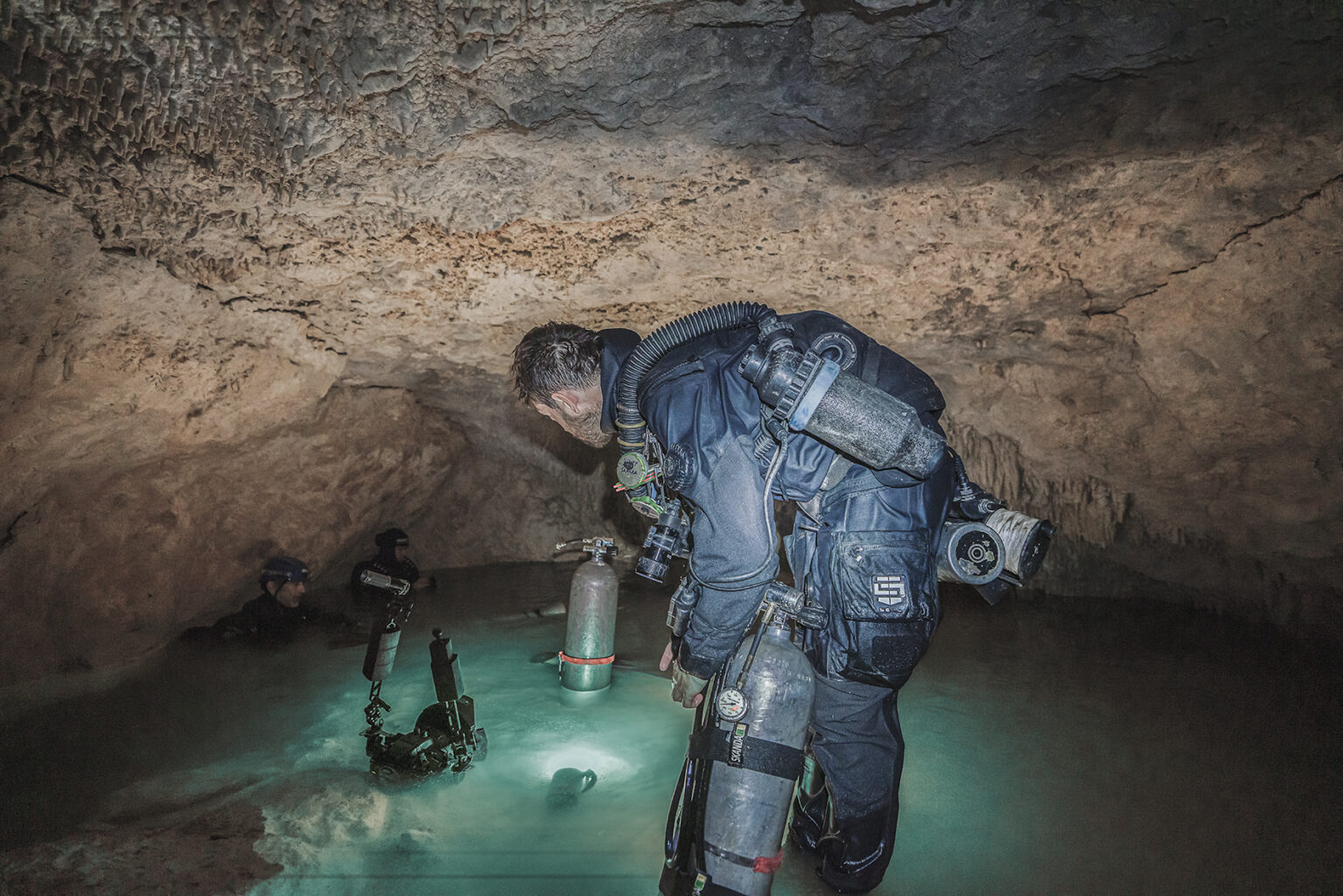
So what’s next? Well, there are still many leads to push from both cenotes. There is a very clear trend that the cave is blocked to the northwest by collapse and breakdowns. I am optimistic that with enough time, we will be able to find a way on and break out in that direction. Hopefully, we will have the opportunity to return during 2023 for a few days diving in Plasma Torus and continue the exploration!
